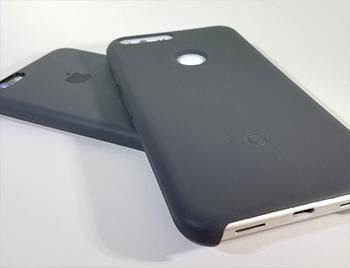A costly new phone doesn't beat a free software update
I bet you'd rather have something for free than have to dish out a rather large pile of cash to get a new phone. I've been on a two-year cycle for the past 7 years or so, and before that I had a non-smart phone – and I had that thing for 3-4 years, without issue. I saw the new phones, I wanted the new phones, but I certainly didn't want to pay for the new phones.
Back when the first iPhone was released, I thought it was a neat way to use an iPod. I wasn't excited about using a touchscreen, and I certainly didn't think I'd be able to rely on a phone without physical number buttons. While I write about smartphones for a living now, I've still got a deep-rooted trust issues with electronics whose controls are all display-based.
At the same time, smartphones have turned out to be pretty neat. They've assimilated our society and we're clearly beholden to their abilities. Most of these devices are even more well-made and hearty than their non-smart predecessors. Some are so well made that they'd outlast their predecessors, if their manufacturers would allow them to do so.
Most smartphones would last longer than 2 years if only their creators would remain dedicated to their operation. To do that, they'd need to keep developers assigned to software for said devices specifically. Doing so with the sales model most every brand uses now just isn't cost effective.
It's not in a manufacturing brand's best interest to send software updates to devices more than a couple years old – or in Apple's case, 3 years old. If a brand were to promise software updates to a smartphone for longer than 3 years, I can't imagine I'd consider buying anything else. But to do so would be a suicide mission for the brand – unless they found a new way to make cash, other than selling new hardware.
So let's consider that for a moment.
Consider a company, which has a large amount of cash on-hand, announcing one day that they're releasing a new smartphone that'll last end users more than 3 years. It'll last that long, they'd say, because they promise to send software updates for 4 or even 5 years after the launch of the phone.
They might sell a lot of phones right away. They might even go so far as to release a second phone with a similar guarantee.
But then component makers would have to slow up their pace of innovation. They'd have to stop creating processors and displays and cameras that are marginally better than they were the year before. They might even have to move to a model in which they focus more on large changes year-to-year, rather than incremental improvements.
But that won't happen.
That absolutely cannot happen.
Because business is business, and companies are always going to want to sell as much as they can as often as they can. To do that, they need to innovate bit-by-bit, creating devices they know won't be usable beyond a couple of years into the future. And whether they like to admit it or not, this industry continues to create products doomed to fail – just so that they can be replaced as quick as possible.
So you were right, Dad. Your flip phone is still better than this Android, because your device needs no software update. Your phone just keeps on trucking, half a decade later. They just don't make em like they used to.

